
Kawaiahaʻo Church is a historic Congregational church located in Downtown Honolulu on the Hawaiian Island of Oʻahu. The church, along with the Mission Houses, comprise the Hawaiian Mission Houses Historic Site, which was designated a U.S. National Historic Landmark (NHL) in 1962. In 1966 it and all other NHLs were included in the first issuance of the National Register of Historic Places.
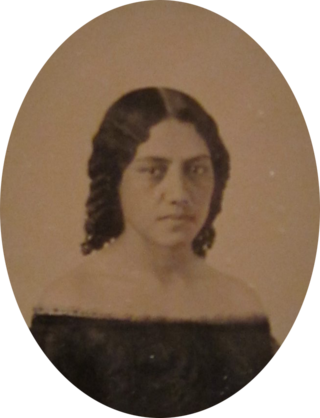
Elizabeth Kekaʻaniau Laʻanui Pratt, full name Elizabeth Kekaʻaniauokalani Kalaninuiohilaukapu Kekaikuihala Laʻanui Pratt, was a Hawaiian high chiefess (aliʻi) and great-grandniece of Kamehameha I, being a great-granddaughter of Kalokuokamaile, the older brother of Kamehameha I, founder of the Kingdom of Hawaii. She was the daughter of Gideon Peleʻioholani Laʻanui and Theresa Owana Kaheiheimalie Rives.

Abraham Kahikina Akaka was an American clergyman. For 27 years, Rev. Akaka was Kahu (shepherd) of Kawaiahaʻo Church in Honolulu, Hawaii. His mother was of Hawaiian ancestry, and his father was of Hawaiian and Chinese ancestry. He delivered his messages in both the Hawaiian and English languages.

Miriam Auhea Kekāuluohi Crowningburg Kamai was a Hawaiian high chiefess (aliʻi) during the Hawaiian Kingdom. She was a cousin of King Lunalilo and namesake of his mother Kekāuluohi who ruled as Kuhina Nui (premier) under Kamehameha III.

Richard Armstrong was a Presbyterian missionary from Pennsylvania who arrived in Hawaii in 1832. Along with his wife Clarissa, he served in mission fields of the Marquesas Islands and in the Kingdom of Hawaii. He established several churches and schools, and was Kahu (shepherd) of Kawaiahaʻo Church after the departure of Hiram Bingham I. Kamehameha III appointed him Minister of Public Instruction, and his accomplishments established an educational system that earned him the nickname "The father of American education in Hawaii".

Akaiko Akana (1884–1933), became the first Kahu (pastor) of Hawaiian ancestry at Kawaiahaʻo Church in 1918. He served in that capacity until his death in 1933.

The Lunalilo Mausoleum is the final resting place of Hawaii's sixth monarch King Lunalilo and his father Charles Kanaʻina on the ground of the Kawaiahaʻo Church, in Downtown Honolulu on the Hawaiian Island of Oʻahu.
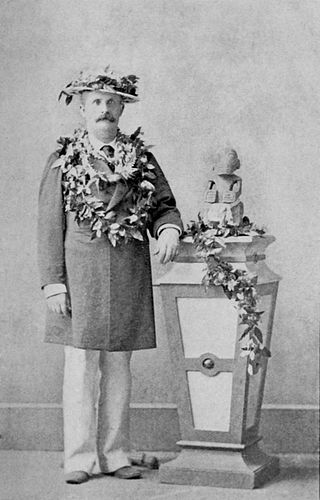
William Nevins Armstrong, aka Nevins Armstrong and aka W. N. Armstrong, was the Attorney General of Hawaii during the reign of King David Kalākaua. He is most widely known outside of Hawaii for the book Around the World with a King, his insider account of Kalākaua's 1881 world tour.
The first lady or first gentleman of Hawaii is the spouse of the governor of Hawaii, an unpaid ceremonial position. Territorial spouses carved out their roles in varied ways, from traditional wives who raised the children and supported their husbands, to philanthropists and society hostesses. Perhaps the most personal insight into any of the spouses came from territorial governor Sanford B. Dole. Three years after the death of Anna Prentice Cate Dole, he published a small book, "for those who loved and still love Anna—my dear wife" detailing their courtship and marriage, her love of poetry, and the admiration the first governor of the Territory of Hawaii had for his wife.
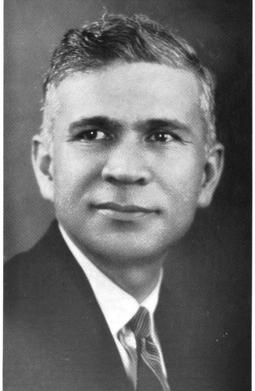
George Paele Mossman was a Honolulu businessman of Hawaiian ancestry, who became successful as a cultural entrepreneur, musician and ukulele maker. He was born in the Kingdom of Hawaii to Thomas and Nahua Kealaikahiki Mossman in the Pauoa Valley on the island of Oahu. After the death of his wife Rebecca Kainapau, he married Emma Keliilalanikulani Lewis. He had 7 children resulting from the two marriages: George R., Thomas W., Robert, Rebecca Pualani, Kaahikipiilani T., Leilani R. and Joseph Kekaulike. Mossman was of the Mormon faith, and a Sunday School superintendent of the Church of Jesus Christ of Latter-day Saints in Hawaii.
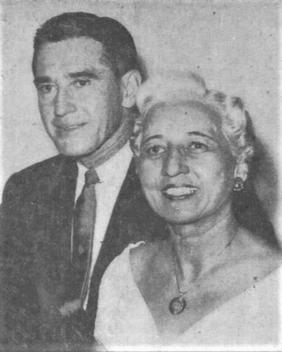
Lucy Puniwai Thurston Blaisdell was the First Lady of Honolulu 1955–1969. She was by profession a teacher, who had a 36-year career in both Hawaii and New York.

Anna Kuulei Furtado Kahanamoku was a Hawaiian teacher who became an elected member of the Hawaii Territorial House of Representatives from the Fourth District, and after Hawaii was admitted to statehood, she served in the Hawaii Senate.

Ethel Moseley Damon was a teacher, writer and historian who served with the Red Cross in Europe during World War I, and was decorated by Elisabeth of Bavaria, Queen of Belgium and by the Mayor of Le Havre.

Henry Hodges Parker was the fourth Kahu (pastor) of Kawaiahaʻo Church in Honolulu. He served in that position 54 years, the longest of any Kahu in its history. Fluent in the Hawaiian language, he was a friend and pastor to Native Hawaiians, which included several decades of the Hawaiian monarchy.

Alice Lillian Rosehill Kahokuoluna was a Congregational minister of Native Hawaiian ancestry. In her time and place, she was the first woman ordained by the Hawaiian Evangelical Association, and the only woman Christian minister in the Territory of Hawaii. Her pastorate was primarily on the Islands of Maui and Molokai, where she helped restore the Siloama Church. Her childhood and young adult church life had been at Kawaiahaʻo Church in Honolulu, and the board of directors of that church later offered her the position of Kahu (pastor).
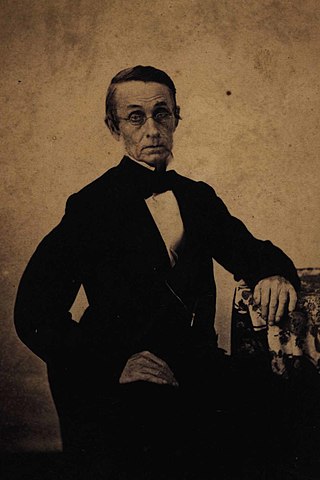
Ephraim Weston Clark was an American pastor and translator most remembered for his decades of work helping to translate the Bible into the Hawaiian language, and his subsequent work on the 1868 revision of the translation. He was the third Kahu (pastor) of Kawaiahaʻo Church in Honolulu, and served in that position 15 years. His early years as a missionary were spent on the Hawaiian island of Maui; while serving as Kahu of Kawaiahaʻo, he also spent several months with the Hawaiian Missionary Society in Micronesia.

William Kamau was an American clergyman, and the second Kahu (shepherd) of Hawaiian ancestry at Kawaiahaʻo Church in Honolulu, Hawaii.

Emma Kauikeōlani Napoleon Mahelona Wilcox, was a socialite, philanthropist and civic leader from Hawaii. She is the namesake of Kauikeōlani Children's Hospital, and the founder of the Samuel Mahelona Memorial Hospital.
Mariah Meali'i Namahoe Lucas (Richardson) Kalama was a Native Hawaiian quilter who was awarded the National Heritage Fellowship. She is known for popularizing Hawaiian quilting, and is well known in the Hawaiian quilting community. Mrs. Kalama was also an ordained lay pastor under Kahu Dr. Abraham Akaka of Kawaiahaʻo Church - Westminster Abbey of the Pacific.

Moses Kuaea was a Native Hawaiian clergyman and politician of the Hawaiian Kingdom. He was pastor of the Kaumakapili Church from 1874 to 1882 and was known as an eloquent preacher. During his time at the pulpit, he helped fundraise for the second building of the church which was completed in 1888 and later burned down in 1900. In 1874, he gave a speech lauding the new elected King Kalākaua prior to his state visit to the United States. After Kalākaua's return to Hawaii, he appointed Kuaea a member of the Privy Council of State and as his Minister of Finance from August 14 to September 27, 1880. After his brief stint in politic, Kuaea returned to preaching at Kaumakapili until his resignation in 1882 due to illness. He died in 1884.


















